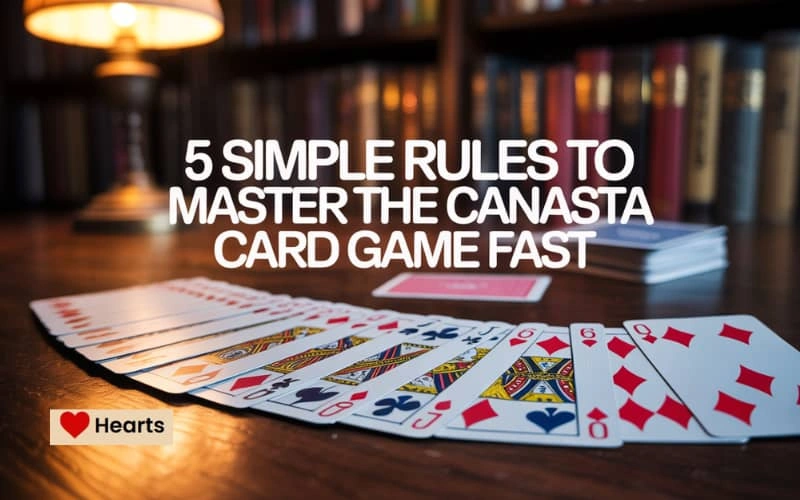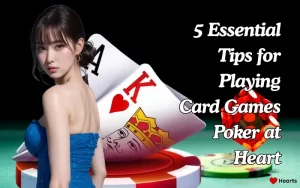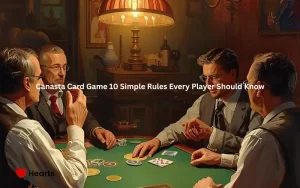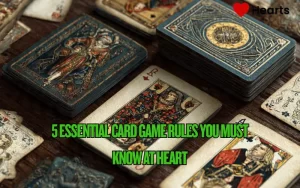The Canasta card game is a fun and strategic way to enjoy time with friends or family. Originating in Uruguay in the 1940s, it quickly gained popularity around the world and remains Heart one of the most engaging card games today. Played with two decks of cards, Canasta challenges players to create melds and accumulate points. While it may seem complex at first, learning a few core rules can help you master the Canasta card game fast. Below are five simple rules that will get you playing like a pro in no time.
Understand the Objective of the Game
The first rule in mastering the Canasta card game is to understand its main goal. The objective is to score points by forming melds, which are combinations of three or more cards of the same rank. For example, three 8s form a meld. The game is usually played in pairs, and each team works together to build melds and eventually complete a canasta, which is a meld of seven or more cards.
The game ends when a player or team goes out, meaning they have played all their cards and met the conditions to finish the round. The final score is calculated based on the value of melds, canastas, and remaining cards. The team or player with the highest score at the end of several rounds wins. Knowing the overall goal keeps you focused and helps shape your strategy from the beginning.
Learn How Melds and Canastas Work
The second key to mastering the Canasta card game is understanding how melds and canastas work. Melds are the foundation of scoring. Each card has a point value. For example, numbered cards from 4 to 7 are worth five points each, while 8s through Kings are worth ten points each. Aces and 2s are worth twenty points, and jokers are worth fifty.
To form a meld, you need at least three cards of the same rank. You can also include wild cards, which are 2s and jokers, to substitute for any card. However, there are limits. A meld must contain at least two natural cards and cannot have more wild cards than natural ones. A canasta is a meld of seven or more cards and can be either natural (no wild cards) or mixed (with wild cards). A natural canasta is worth more points, so it is wise to aim for one if you can.
Follow the Rules for Drawing and Discarding
Each turn in the Canasta card game involves drawing and discarding. This is where strategy really comes into play. At the beginning of your turn, you draw either the top card from the stockpile or the entire discard pile if you meet the conditions to pick it up. You must then add one card to your hand and discard one to end your turn.
The discard pile can only be picked up if you can use the top card in a meld immediately and meet the minimum point requirement for that round. This rule is important because it can either help you or give an advantage to your opponent. Being able to control the discard pile is a key skill in Canasta. Always be aware of what your opponents need and discard wisely to avoid helping them build melds.
Know the Minimum Point Thresholds
Another simple rule to help you master the Canasta card game fast is to learn the minimum point thresholds for making your first meld in each round. Depending on your current score, you must reach a certain number of points in melds to be able to start laying down combinations. Here are the basic thresholds
- Below 1500 points requires a minimum of 50 points in your first meld
- Between 1500 and 2995 points requires 90 points
- 3000 or more requires 120 points
- If you are starting with a negative score, the requirement is only 15 points
These thresholds can be met with multiple melds in one turn, and the values of the cards in those melds must add up to the required number. Keep track of your score and your partner’s progress to make strategic decisions about when and how to meld.
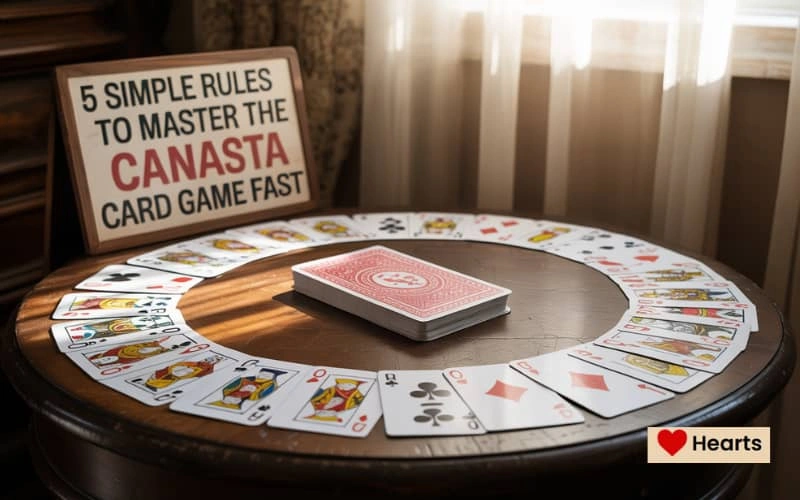
Focus on Going Out and Blocking Opponents
The final rule to master the Canasta card game is to focus on going out strategically while also blocking your opponents from doing the same. Going out means using all the cards in your hand, and to do so legally, your team must have at least one canasta. Once you meet that condition and discard your final card, the round ends and scores are tallied.
Timing is critical. Going out too early may leave points on the table, especially if your partner has many unplayed cards. On the other hand, delaying too long can backfire if your opponents go out first. Communicate with your partner and plan your final moves carefully.
You should also play defensively to stop your opponents from reaching their goals. Watch what cards they pick and discard, and try to keep the discard pile locked with cards they cannot use. Playing a wild card on the discard pile makes it frozen and harder for others to pick up, giving you more control.
Conclusion
The Canasta card game may seem intimidating at first canasta card game, but by learning these five simple rules, you can quickly become a confident player. Focus on forming melds, understanding the value of canastas, using smart draw and discard strategies, meeting your meld requirements, and playing both offensively and defensively. With practice and teamwork, you will enjoy more wins and better games.
Whether you are playing casually with friends or getting competitive, these core rules will give you the edge you need to master the Canasta card game fast. Keep learning as you play, and you will soon develop the instincts and strategy needed to enjoy every round.


